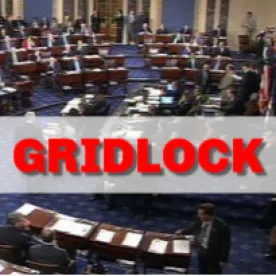In this two-part series, we take a close look at the uncertainties facing the U.S Consumer Product Safety Commission (CPSC). This post examines how the ongoing difficulties in confirming CPSC nominees creates an existential threat for the agency, and we look at the game plans a President Biden or re-elected President Trump could use to overcome those difficulties and keep the lights on at the CPSC. Our first post analyzed the difficulties facing nominees.
By design, the CPSC is always evolving, as Commissioners’ staggered terms mean a vacancy is never more than a few short years away. Since 2017, however, the agency’s leadership has been unusually uncertain.
In February 2017, President Trump elevated CPSC vice-chair Ann Marie Buerkle, a Republican, to the agency’s acting chairpersonship. The Senate never acted on Buerkle’s nomination for the permanent chair or on her re-nomination to the Commission, and she left the agency in October 2019. Buerkle handed the acting reins to Commissioner Bob Adler, a Democrat, along with a commission with an empty seat and a 2-2 partisan split.
Earlier this year, the White House nominated Dr. Nancy Beck to fill both the vacancy and the chair, but, as we wrote in Part One, Beck’s nominations may be just as stalled as Buerkle’s were. This gridlock on CPSC nominations frustrates the CPSC’s current agenda, and, if the impasse continues, it could also threaten the agency’s most basic operations.
And Then There Were Two?
By statute, the CPSC has a quorum (and thus authority to operate) only if it has three active commissioners. If a third vacancy (out of five) occurs, two commissioners constitute a quorum for six months, but then the agency loses its ability to conduct official business.
The expiration dates for the current terms of the five Commission seats create a real prospect that the agency could drop to just two commissioners barely two years into the next presidential term. Democrats Elliot Kaye and Bob Adler will leave office no later than October 2021 and 2022, respectively, and one seat is already vacant.
|
CPSC Seat |
Expiration |
Hold-over |
|
Elliot Kaye (D) |
2020 |
2021 |
|
Bob Alder (D, Acting Chair) |
2021 |
2022 |
|
Dana Baiocco (R) |
2024 |
2025 |
|
Vacant (Beck nominated) |
2025 |
2026 |
|
Peter Feldman (R) |
2026 |
2027 |
If the stalemates continue, Republicans Dana Baiocco and Peter Feldman would have single-party control for six months, but then the CPSC would be without a quorum in April 2023.
A quorum-less CPSC has happened before, and every interested party agreed at the time that the problem needed immediate solving. In the debate leading to the Consumer Product Safety Improvement Act of 2008 (CPSIA), arguably the most sweeping overhaul of the CPSC since the agency was created in 1972, stakeholders from all corners agreed that they needed to fill the vacancy that had been created with Chair Hal Stratton’s departure in July 2006 and thus restore the agency’s authority to act.[1] The CPSIA provided both a quick-fix – a one-year quorum for a two-commissioner CPSC – and the longer-term solution of an agreement to fill the fourth and fifth seats.
In 2021, if President Biden or President Trump and the 117th Senate wish to avoid another CPSC vacuum, they’ll need to work together to end the stalemate that has lasted for three years. “Working together” will look different depending on which party wins both the Presidency and the Senate.
President Biden
Democratic Senate
With a seat open and an acting chair at the CPSC, President Biden and a Democratic Senate would likely prioritize appointing a CPSC commissioner. A number of key CPSC policy initiatives are stalled, including work on furniture tip-over, organohalogen flame retardants, and overhauls of the agency’s rules on voluntary recalls and information disclosure under Section 6(b) of the Consumer Product Safety Act. There is also renewed momentum for CPSC reform in Congress, with multiple bills to address specific products having cleared the House floor, and members of a Democratic congressional majority would likely be more inclined to spend time debating and passing new CPSC legislation if they knew they had a Democratic-led CPSC to implement that legislation quickly and aggressively.
Any Democratic Senate majority would likely be slim, raising the prospect of the same gridlock that imperils Beck’s nominations However, Democrats on the Hill have typically been more willing to commit political resources (including floor time for votes) to the CPSC than Republicans have, so a Democratic Senate may work harder to vault any procedural hurdles.
Republican Senate
With a Republican Senate, President Biden’s path to a 3-2 Democratic CPSC majority would be less certain. As noted above, Democrats have typically made the CPSC more of a political priority than Republicans have, and this may lead a Republican opposition Senate to put its road-blocking resources elsewhere, but a strategy of resistance could stall a Biden nominee.
Ordinarily, a President could try to secure confirmation for a nominee for any multi-member independent agency by pairing that nominee with a nominee from the Senate majority’s party. If the White House gives Senate leadership a chance to pick someone for a slot destined to go to their party, leadership typically reciprocates by blessing any tolerable choice from the President. For example, in 2014, President Obama paired the nominations of former Commissioner Joe Mohorovic, a Republican, and Commissioner Elliot Kaye, and the two were confirmed by unanimous consent. However, this time, there is unlikely to be a Republican seat at the agency for Biden to offer, so he would likely need to pair a Democratic CPSC nominee with a Republican nominee for another agency.
President Trump
Republican Senate
Naturally, a re-elected President Trump’s best chance for a successful fourth bite at the CPSC-chairpersonship apple is a friendly Republican Senate. Still, it’s no guarantee, as the experiences of Buerkle and, thus far, Beck have shown. There seems little reason to believe Senate Democrats would go along in a second Trump term, just as it’s not clear what could change the Republican Senate’s apparent reluctance to devote political capital to the agency. The key difference in a second Trump term would be the calendar: As noted above, the CPSC’s two Democratic commissioners’ terms both expire in the next year or so, which may provide Senate Democrats with the incentive to work with the White House to fill those vacancies, even if that means having to confirm a Republican nominee, as well.
Democratic Senate
If Democrats win the Senate, the odds for any of his nominees drop significantly. Even if the filibuster were to disappear, and with it the ability for a minority to stall a president’s agenda, a Senate majority still can still do so by voting “No.” Winning over enough Democrats to secure 50 votes for a nominee would likely require some tangible incentive. That could come in the form of legislation or budget items, but a paired nomination is more likely, given CPSC’s Democrats’ challenges in the next few years.
Only time will tell if the prospect of no quorum at the CPSC can overcome the partisan divide that has left the agency with vacancies and acting chairs. If there is a will to solve the problem, the November election may suggest a way.
[1] For much of its history, the CPSC received appropriations for only three of its five seats. Thus, when Stratton departed, only two commissioners remained – Acting Chair Nancy Nord (R) and Commissioner Thomas Moore (D). Six months later, Nord’s and Moore’s two-member CPSC could no longer take official action.



 />i
/>i
